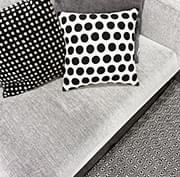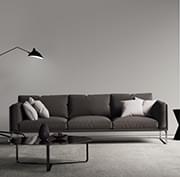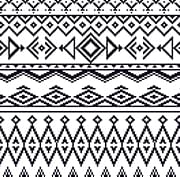Latest Trends
What is the monochrome trend?
On the surface, monochrome looks like a fairly easy style to incorporate into a home – how hard can it be to devise an attractive room that only features grey, black and white in its colour scheme? These colours are timeless, glamourous and infinitely adaptable, but many worry that they might be too boring and monotonous to look at.
Monochrome is a much more versatile style than you might have thought, though, and suits a wide variety of homes. Importantly, it’s also affordable, so you can create and maintain a chic look throughout your room without it impacting too heavily on your bank balance.
What are the key features of the monochrome trend?

Neutral colours
As we have already seen, the predominant colours of monochrome are black, white and grey. These three colours offer myriad options for designers and decorators who can play them off each other. White walls and floors with a chic black leather sofa and chairs, for example, is a classic look and suits every style sensibility from 1940s Hollywood to the industrial trend.
However, you don’t have to stop there if you don’t want to – many people inject a shot of colour into their monochrome rooms in the form of a green plant or a painting. This provides a point of interest for the eye and a nice decorative contrast. However, you should remember not to go overboard in order to preserve the monochrome style.

Simplicity
One of the main advantages of monochrome is that there’s no need for it to be overly fussy – in fact, this is a trend that lends itself well to homes where simplicity is highly valued. While a lot of ornate homes have been designed with monochrome in mind, you’ll find just as many monochrome homes that are sparer as the trend dovetails nicely with a minimalist style.

Varied patterns
Monochrome doesn’t necessarily mean that you should only deal in block colours and allow the contrast to remain there. You can also look at the effect that different patterns might have on the room overall. Contrasting stripes and spots are a good place to start, but why not try something a little more complicated (if you can find it)? Herringbones and fretwork are just two of the styles that designers love to experiment with.















